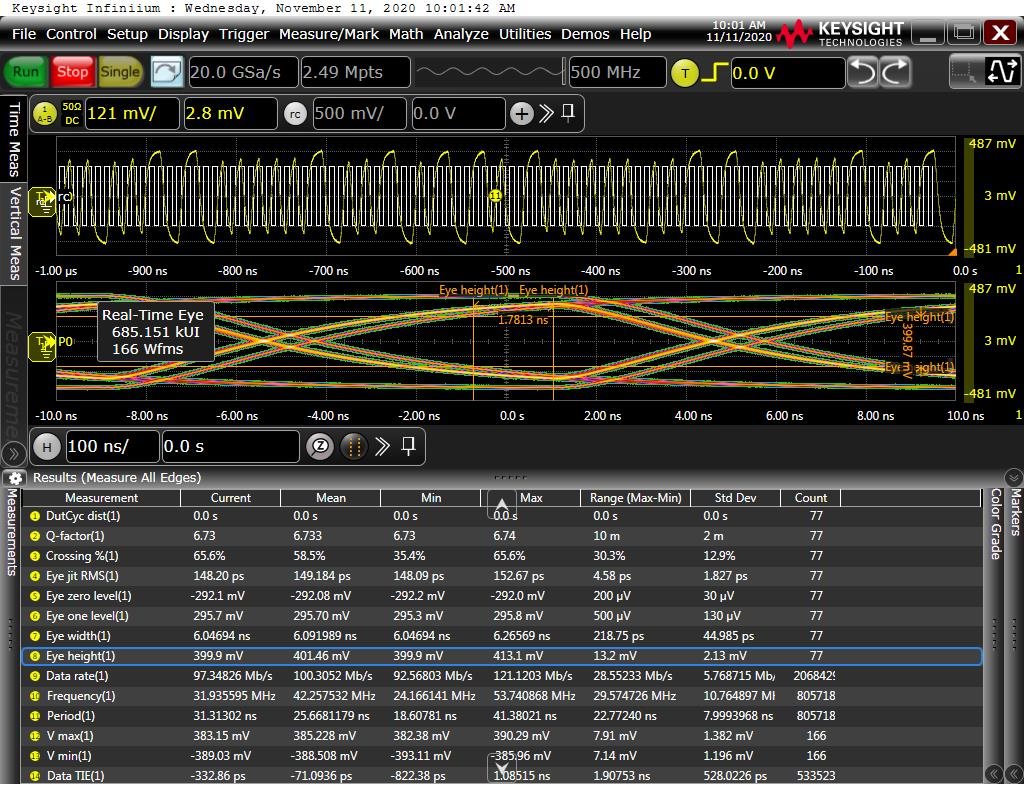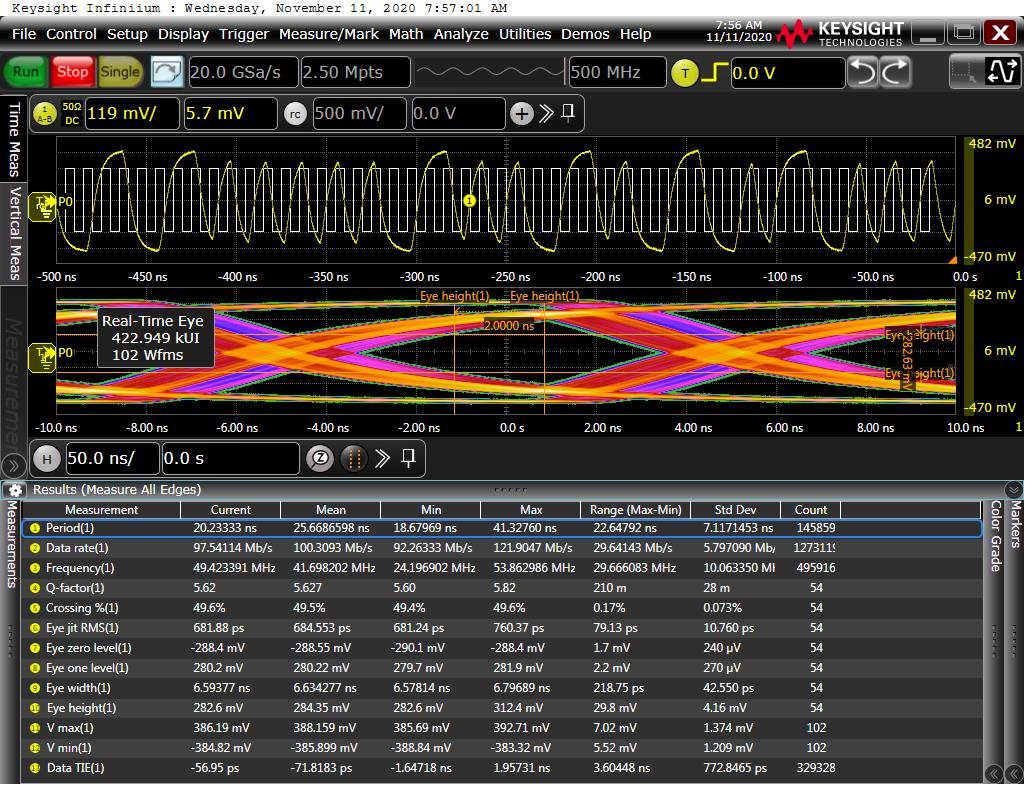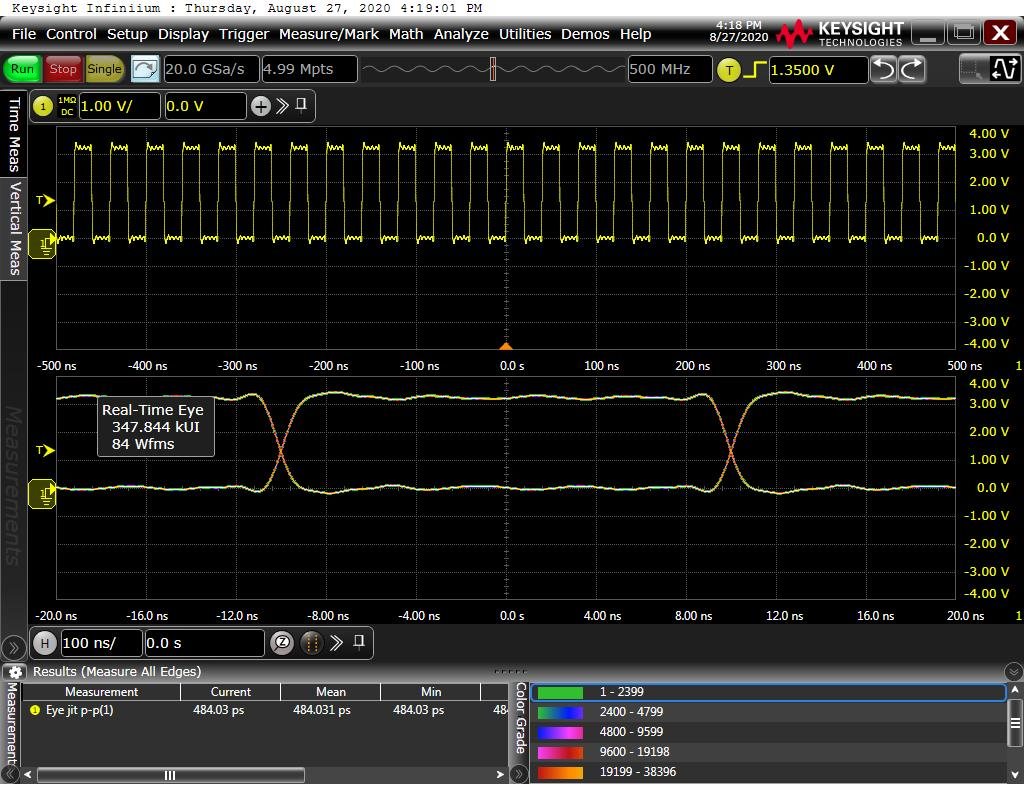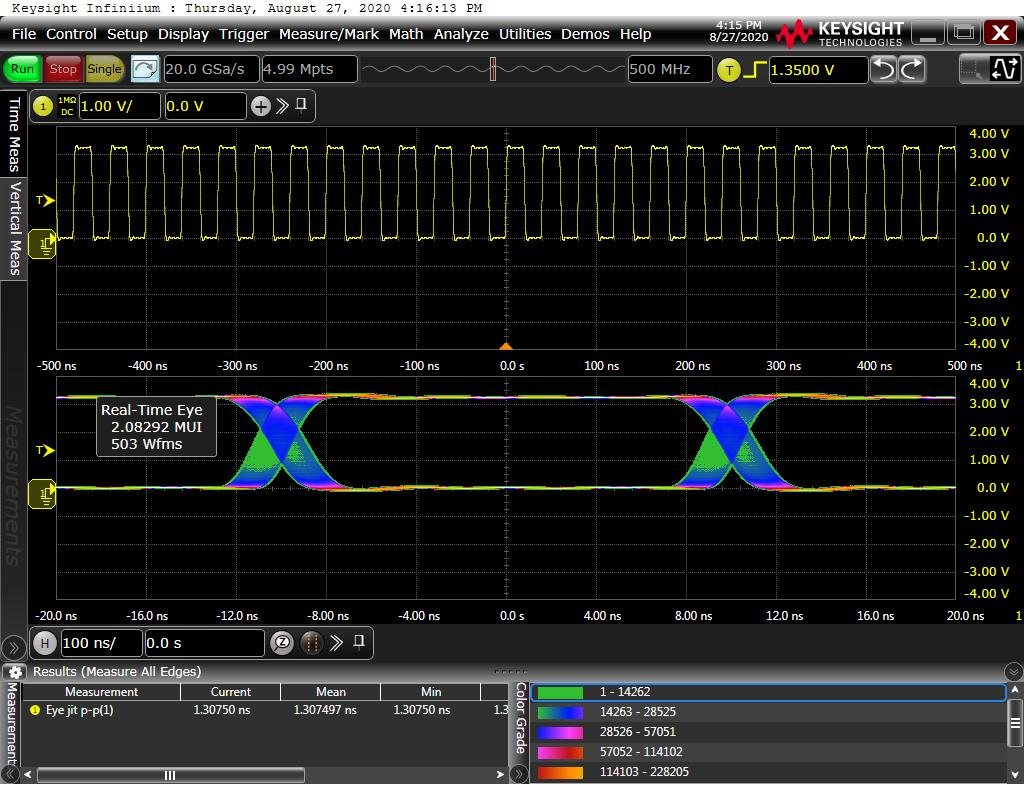Dear TI members,
We are currently validating the Vod-bc requirement of the back channel.
We have tested under two different conditions.
- Oscillator without spread spectrum --> Pass the Vod-bc requirement from your datasheet Vod-bc = 400mV (spec: 380mV to 520mV). See osc caputres below.
- Oscillator with spread spectrum --> Fails the the Vod-bc requirement from your datasheet Vod-bc = 280mV (spec: 380mV to 520mV). See osc caputres below.
We have been testing in the past without SS, but to have a pass in EMCs we need to use a SS clock. In our case we are using +-0.1% deviation. In the past a former colleague was already in touch with you to define the SS required in this post --> e2e.ti.com/.../870913
Is it possible to relax the Vod-bc spec if SS is used?
Thx for your support,
Vicent Climent.
WITHOUT SS
WITH SS







